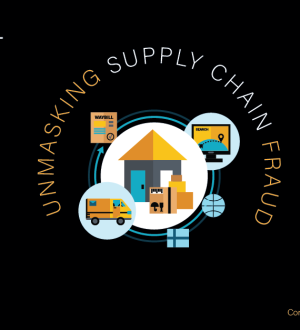
Are C-Suites in the Middle East draining their organizations?
Governance of Executives’ Practices
The Middle East, specially countries of the Gulf Cooperation Council (GCC) have been, now for some time, a desired destination for expats due to the opportunities they provide and the attractive tax free remuneration packages.
Hence the region has witnessed an increasing number of expats assume executive positions predominantly in the private sector, notwithstanding the so designated executive advisers in the public sector.
The C-Suite of any organization are responsible to ensure that the key risks affecting the organization are being managed, through the development, implementation and maintenance of effective internal control environment. They are responsible to propose the respective policies and processes to the Board of Directors/Owners for approval.
However, in the Middle East, in light of more relaxed Governance practices, limited emphasis on compliance and marginalized role of internal audit and other assurance activities, there is more room for abuse of the authorities delegated to the C-Suite leading to losses and drainage of organizations’ assets. Whilst, the C-Suite are supposed to be the enforcers and guardians of organizational policies, they often are the ones not to comply and breach the requirements of these polices.
So, is your C-Suite Draining Your Organization?
To answer this question one needs to explore some practices that could be taken into context.
Do these practices sound familiar?
- Have new executive and senior management positions been created without justifiable business need?
- Have executive and senior management positions been filled through recommendations of existing C-Suite members?
- Have such positions been filled bypassing the organization’s recruitment policy?
- Have certain positions’ officers been replaced by others recommended by the C-Suite with significant increase in the remuneration packages?
- Have all recruits and C-Suite been validated for conflict of interest?
- Did the CEO recommend and hire his/her CFO?
- Did the CEO and/or CFO have the final decision to appoint the Chief Audit Executive?
- Did the CFO interview the Chief Audit Executive?
- Have the Board and its Committees been assessed independently?
Who is Monitoring the Guardian?
A Chief Financial Officer among other vast responsibilities, is supposed to be developing and implementing financial policies and internal controls to protect the assets of an organization, optimize its financial performance and manage its cash flows.
- So who is assuring that the CFO is not abusing the system that he/she are supposed to guard and protect?
- Who is to explore that his/her expense claim is in line with the organization’s policy?
- Who is to identify that his/her re-allocation of spend items within the budget is valid and in line with the respective policies?
- Who is to identify that his/her business travels are justified and for valid business needs?
- Who is to challenge the finance department’s budget is reasonable, realistic and lean?
- Who is to hold him/her accountable for unlawful attestation of the adequacy and effectiveness of the internal control environment which is reflected on the financial results?
- Who is to identify and challenge conflicts of interests and collusion with board members?
For those who get too excited reading these questions, and rush with answers along the lines of:
- “Well it is the role of the CEO”.
- “Oh.. it is the role of the Audit and Compliance Committee”.
- “The Board of Directors should be monitoring all of this”.
- “The regulator should be cracking down on these practices”.
- “External and internal auditors should pick on these matters”.
Before one rushes in with all these answers, consider the following:
- Very weak or non-existent governance practices even among large listed organizations.
- Precedents of C-Suite corruption and fraud that went unaccounted for and the latter receiving their full employment dues, because of weak and lengthy litigation processes, and costly proceedings.
- Toothless regulators that have limited to non-existent executive powers; hence, rendering any whistle-blower obsolete.
- Board members disconnected, too stretched or unqualified to focus on the business.
- Board room politics and collusion.
- C-Suite operating under the premise of prolonging the period of their appointment, maximizing their remuneration at the expense of integrity and effectiveness in serving the organization’s strategy and goals.
How can the C-Suite be better governed?
Short answer is that there is no magic wand that would miraculously make corporate practices transparent and functional overnight. The way forward to drive change and lift the level of governance is to establish more synergies amongst a number of attributes that spread across the Board, management, regulatory bodies and assurance providers of any particular organization, as demonstrated below.

How can Risktal help enhance your organization’s governance?
For each of the attributes to better governance identified above, Risktal’s highly experienced professionals will conduct an independent assessment of your organization’s practices and derive their levels of maturity.
These assessments are not meant to be a “tick-the-box” exercise. On the contrary, these are independent, unbiased procedures conducted to add value to stakeholders who are determined on driving change in their organizations, prevent and remediate corruption in order to achieve organizational strategic objectives.
We look forward to starting the conversation, so do not hesitated to contact us http://www.risktal.com/contact, and let us work together to drive change and success.






